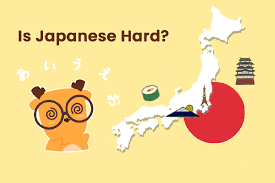
The phrases below you will hear and hopefully use everyday while in Japan. The Japanese are a very polite people and appreciate it when foreigners are as well. Using Japanese greetings and courtesies is well received by the Japanese. Using phrases such as, excuse me (Sumimasen) when you need assistance, please (Onegai Shimasu) when asking for something, and thank you (Arigato) are always appreciated.
In Japanese culture, expressing gratitude is considered an essential aspect of social interaction. The language contains several expressions of gratitude, such as “Arigatou” (Thank you, informal) and “Arigatou gozaimasu” (Thank you, formal), which are commonly used in daily conversations. Japanese people often express gratitude through actions as well, such as giving gifts or performing kind deeds without any expectation of reciprocity. Overall, gratitude is deeply ingrained in Japanese culture and plays a significant role in interpersonal relationships.
Listen | Meaning |
|---|---|
Arigatou gozaimasu (ありがとうございます) Thank you (Most common). Note: The “u” at the of end of gozaimasu is silent.
.
| |
Arigatou gozaimashita (ありがとうございました) Thank you past tense.
| |
Doumo arigatou gozaimasu (どうもありがとうございます) Thank you very much. Note: The “u” at the of end of gozaimasu is silent.
| |
Arigatou (ありがとう) Thank you (Casual). Use with family and friends. | |
Dou itashimashite (どういたしまして) You’re welcome
| |
Iie, iie (いいえ、いいえ) No, no, it was nothing
| |
Japanese greetings are an essential part of the culture and are based on respect and politeness. The most common greeting is “Konnichiwa,” which means “hello” or “good afternoon.” Japanese greetings are an essential part of the culture and reflect the importance of respect and politeness in social interactions. In Japanese culture, there are several ways of saying goodbye, each with its own level of formality and context. One common way to bid farewell is by saying “sayonara,” which is a more formal and final goodbye. Another popular phrase is “ja, mata,” which is a more casual way of saying “see you later.”
Listen | Meaning |
|---|---|
Ohayou gozaimasu (おはようございます) Good morning. Note: The “u” at the of end of gozaimasu is silent.
.
| |
Konnichiwa (こんにちは) Good afternoon or hello. Used during daytime.
| |
Konbanwa (こんばんは) Good evening.
| |
Oyasuminasai (おやすみなさい) Good night.
| |
Sayounara (さようなら) Good bye (formal)
| |
Ja mata (じゃあまた) See you later.
| |
“Sumimasen” (すみません) and “gomen nasai” (ごめんなさい) are two common Japanese expressions used to convey apologies or show gratitude. “Sumimasen” can be translated as “excuse me” or “I’m sorry,” and is often used in situations where one needs to get someone’s attention, make a polite request, or apologize for a minor inconvenience. On the other hand, “gomen nasai” can be translated as “I’m sorry” or “forgive me,” and is typically used to convey a more heartfelt apology for a mistake or an offense.
Listen | Meaning |
|---|---|
Sumimasen (すみません) Excuse me or I’m sorry.
| |
Gomen nasai (ごめんなさい) I’m sorry.
|
Listen | Meaning |
|---|---|
Hai (はい) Yes
| |
Iie (いいえ) No |
Listen | Meaning |
|---|---|
Itadakimasu (いただきます) Said before eating or drinking.
| |
Oishii (おいしい) Delicious
| |
Gochisosama deshita (ごちそうさまでした) Thank you for the meal.
|
In a Japanese restaurant, there are several common phrases and expressions that can help you navigate the dining experience with ease and politeness. Upon entering, you will likely hear the staff greeting you with “いらっしゃいませ” (irasshaimase), which means “welcome.” To get the attention of the serving staff, you can use the phrase “すみません” (sumimasen) shown above, which means “Excuse me” in Japanese. You can request an English menu by saying “えいご の メニュー が あります か ?” (eigo no menyū ga arimasu ka?). When ordering food, you may use “これをください” (kore o kudasai), which translates to “please give me this,” while pointing at a menu item. To ask for the bill, you can say “お会計お願いします” (o-kaikei onegaishimasu), which means “please give me the bill.” Finally, after finishing your meal, it is customary to thank the staff by saying “ごちそうさまでした” (gochisosama deshita) shown in Mealtime Expressions, which is a polite expression of gratitude for the meal. These phrases are key to ensuring a smooth and enjoyable dining experience while showing respect for the local customs and traditions.
Listen | Meaning |
|---|---|
Irasshaimase (いらっしゃいませ) Welcome
| |
Eigo no menyuu ga arimasu ka? (えいご の メニュー が あります か ?) Do you have an English menu?
| |
Kore o kudasai (これをください) Please give me this.
| |
O-kaikei onegaishimasu (お かいけい おねがい します) Please give me the bill.
|

Learning a new language can be an exhilarating journey, filled with moments of discovery and accomplishment. However, it also presents its fair share of challenges, especially when tackling a complex language like Japanese. From the intricate writing system to the nuances of politeness levels, navigating the path to Japanese language proficiency requires dedication, strategic approaches, and access to effective resources. In this article, we’ll explore the challenges inherent in learning Japanese, along with various methods and avenues for success, including language learning apps, formal schools, continuing education, and structured learning systems.
Writing System Complexity: One of the most prominent challenges of learning Japanese is its writing system, which comprises three scripts: kanji (logographic characters), hiragana (syllabic script), and katakana (used for foreign words and emphasis). Learning to read and write kanji, which involves memorizing thousands of characters, can be particularly daunting for learners.
Politeness and Honorifics: Japanese is a language that places great emphasis on politeness and honorifics. Different verb forms and vocabulary are used based on the formality of the situation and the relationship between speakers. Mastering the appropriate level of politeness adds an extra layer of complexity to language acquisition.
Cultural Context: Japanese culture and language are deeply intertwined. Understanding cultural nuances and social etiquette is essential for using the language appropriately. Failure to grasp cultural context can lead to misunderstandings and communication breakdowns.
Language Learning Apps: Language learning apps like Duolingo, Rosetta Stone, and Babbel offer convenient and interactive platforms for learning Japanese. These apps often provide lessons focused on vocabulary, grammar, reading, writing, and listening skills. Some apps incorporate gamification elements to keep learners engaged.
Formal Schools and Classes: Enrolling in formal language schools or classes offers a structured and comprehensive approach to learning Japanese. Experienced instructors guide learners through lessons, providing opportunities for practice, feedback, and interaction with fellow students.
Continuing Education Programs: Many universities and community centers offer continuing education programs specifically tailored to language learners. These programs cater to both beginners and those seeking to advance their language skills.
Online Resources: The internet provides a wealth of online resources, including video tutorials, podcasts, and forums where learners can interact with native speakers and fellow learners. Websites like Tae Kim’s Guide to Learning Japanese and the Japan Foundation’s online resources offer valuable study materials.
Japanese Language Proficiency Test (JLPT): The JLPT is a standardized test that assesses the proficiency of non-native speakers in Japanese. It consists of multiple levels, from N5 (beginner) to N1 (advanced), and serves as a widely recognized measure of language ability.
Self-Study Guides: Self-study guides and textbooks, such as Genki and Minna no Nihongo, provide a structured curriculum for learners to follow. These guides often include exercises, cultural insights, and explanations of grammar points.
Immersion and Conversation Practice: Immersing oneself in the language through activities like watching Japanese films, reading manga, or engaging in conversation with native speakers can accelerate language acquisition and improve practical skills.
Learning the Japanese language is a rewarding endeavor, albeit one that comes with its share of challenges. The complex writing system, politeness levels, pitch accent, and cultural nuances demand a strategic and dedicated approach. Fortunately, there are various methods and resources available, ranging from language learning apps and formal schools to continuing education programs and structured learning systems. By combining these approaches and adapting them to individual learning styles, aspiring learners can navigate the challenges of learning Japanese and embark on a journey toward fluency, cultural understanding, and enriched communication.

When it comes to learning a new language, having access to reliable and diverse resources is crucial for success. For those seeking to master the Japanese language, NHK (Japan Broadcasting Corporation) offers an extensive range of language learning materials that cater to learners of all levels. NHK’s dedication to providing high-quality content has made it a trusted source for individuals worldwide who are eager to immerse themselves in the richness of the Japanese language and culture.
NHK’s language learning platform serves as a one-stop hub for anyone interested in mastering Japanese. With user-friendly interfaces and intuitive navigation, this platform features a wealth of resources designed to help learners enhance their reading, writing, listening, and speaking skills.
The “Easy Japanese” website offers bite-sized lessons and articles that are tailored to beginners. These lessons are accompanied by audio recordings, making it easier for learners to grasp pronunciation and intonation. The site covers a wide range of topics, from everyday conversations to cultural insights, ensuring learners develop a well-rounded understanding of the language.
NHK World offers a series of short video lessons known as “Nihongo Quick Lesson.” These videos focus on essential phrases, grammar points, and cultural nuances, allowing learners to acquire practical language skills while gaining insights into Japanese society.
NHK’s radio programs and podcasts are invaluable resources for improving listening comprehension and expanding vocabulary.
For those looking to stay informed while honing their language skills, NHK’s “Learn Japanese from the News” podcast delivers news stories at a slower pace, making it easier for learners to follow along. This resource is particularly beneficial for learners striving to improve their listening and comprehension abilities.
NHK offers mobile apps that allow learners to study Japanese on the go.
“NHK World Easy Japanese” App: This app provides an interactive way to learn Japanese through quizzes, games, and lessons. It’s an excellent choice for learners who prefer learning through interactive activities.
“NHK News Web Easy” App: For those interested in expanding their vocabulary and understanding of current events, this app provides simplified news articles with furigana (phonetic readings for kanji characters), audio clips, and vocabulary lists.
NHK’s commitment to providing learners with a deeper understanding of Japanese culture sets its resources apart.
Cultural Videos and Documentaries: NHK World produces documentaries and videos that delve into various aspects of Japanese culture, history, and society. These resources not only enhance learners’ language skills but also offer a window into the cultural context of the language they are studying.
Language and Etiquette Guides: NHK offers guides that delve into Japanese etiquette, customs, and cultural norms. These guides not only help learners navigate social situations but also teach them how to use the language in culturally appropriate ways.
With a diverse range of materials catering to learners of all levels, NHK has positioned itself as a reliable and comprehensive source for anyone aspiring to master the Japanese language. From interactive apps to informative podcasts and cultural insights, NHK’s commitment to quality and accessibility makes it an indispensable tool for language learners around the world.
Contact us at [email protected], or click here to use our contact form.
Submission successful. You will receive a confirmation email, shortly.